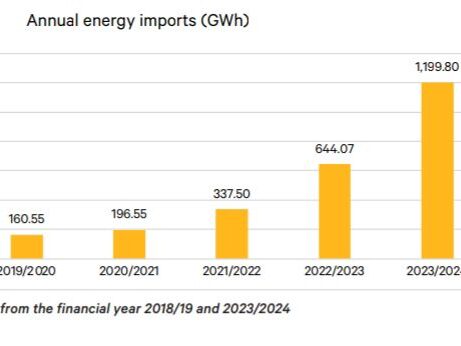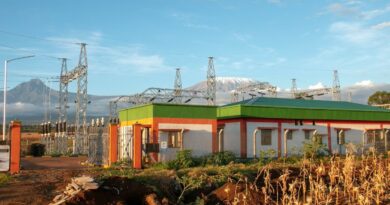Kenya’s electricity imports grow 7 times in five years

The amount of electricity that Kenya imports has grown by seven times in the last five years alone, exposing the country’s growing reliance on its neighbours to meet its power needs.
The lates statistics from the Energy and Petroleum Regulatory Authority (EPRA) show that Kenya’s power imports jumped to 1,199.80GWh in the financial year to June 2024, compared to just 169.71GWh only five years prior.
It is also an increase of 86.2% compared to total imports amounting to 644.07GWh in 2022/23.
Kenya primarily imports electricity from Uganda and Ethiopia. Last week, Kenya Power also signed a power exchange agreement with the Tanzania Electric Supply Company Limited (TANESCO), which will see Kenya import electricity from its southern neighbour in case of shortages, and vice versa.
Kenya and Uganda already have a decades-old power exchange that sees the two trade partners buying and selling electricity from each other. Kenya is however the net importer of power from Uganda, with the East African Community (EAC) country’s supply helping stabilize electricity supply in Western parts of Kenya.
The quantity of power imports into Kenya has however skyrocketed in recent years following the signing of a Power Purchase Agreement (PPA) between Kenya Power and the Ethiopian Electricity Power Company (EEP) in July 2022.
Under the agreement, Kenya started to import 200MW from Ethiopia in December 2022 but full commercial operations of the PPA kicked off a year later in December 2023. This supply will be stepped up to 400MW three years from the time the imports commenced, pointing to sometime around December 2026.
“These contracts allow Kenya to import additional energy from its neighbors while increasing the interconnected grid’s reliability. During the review period, Kenya imported 1,199.80GWh of electricity, which constituted 8.77% of the country’s energy mix,” said EPRA in the statistics report.
The highest import occurred in January 2024, totaling 142.25GWh. The increase from December 2023 is attributed to the commencement of full commercial operations under the power purchase agreement between KPLC and EEP, which began on 1st December 2023.
The increased reliance on imports to meet the growing local demand for power is a risky move especially if local generation is not added at a fast enough speed. Kenya is not signing new power deals at the moment as a ban on new PPAs imposed by the National Assembly in 2023 remains in force.
This means that any potential future economic, social and political conflicts between Kenya and its neighbours could jeopardize its energy security unless it moves quickly to bolster its own generation capacity.
info@theenergyreview.com
Discover more from THE ENERGY REVIEW
Subscribe to get the latest posts sent to your email.


